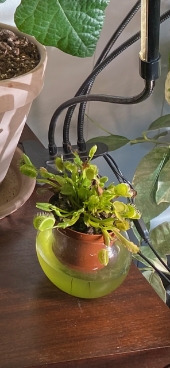I have had many conversations with my students about dressing for cold weather as I love the cold and melt in the heat.
I like to emphasize a couple of points if any of them get REALLY serious about dressing for REAL cold (conditions that rarely apply in Southern Illinois).
1) Layering is Magic!! You can always shed a layer if you get too hot, but you can't put on the layer if you didn't bring it with you. Also, one very warm coat over simple clothing underneath probably won't work in the worst conditions.
2) 1st layer is meant to keep you dry, not keep you warm. It should be skin friendly, but probably not cotton as cotton loves to absorb moisture which will make you cold. Ideally, this layer should also be smooth so that other layers easily slide over without bunching.
3) 2nd layer is meant to keep you toasty warm! Could be wool, fleece, down,....basically anything that will create dead air--little pockets of air that are trapped and can't escape, thereby retaining your own body heat.
4) 3rd layer is meant to be durable. This one should be resistant (or proof) to wind, water, not tear at the slightest branch or twig. It is the final layer on the outside.
There can be many versions of this, but the three layer system works well. Some of my students understand the principle, but few have ever spent any time outside when the temperatures are below zero and the wind is blowing fiercely. Some are duck hunters and do understand some of the principles well from first-hand experience. Overall, it makes for a good conversation.
Eric









